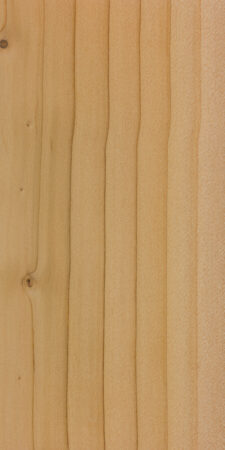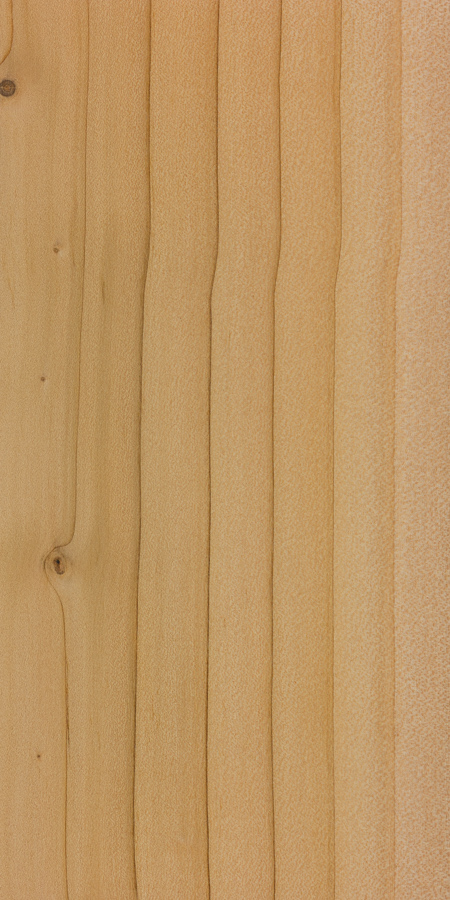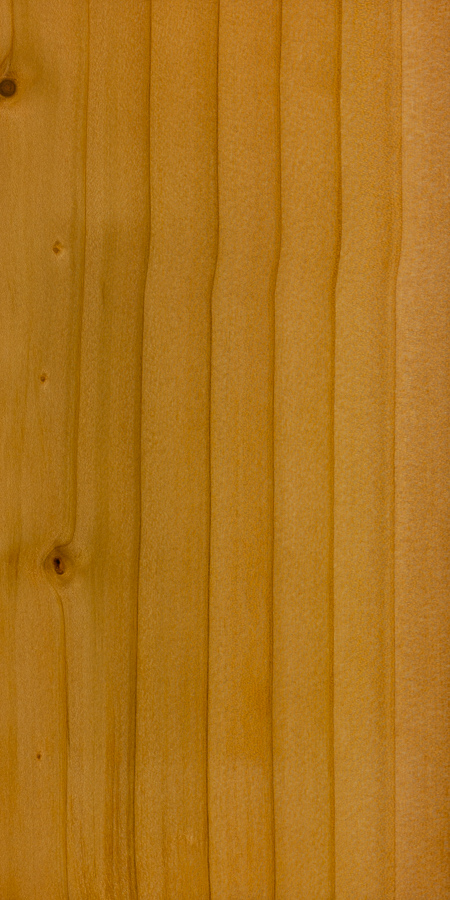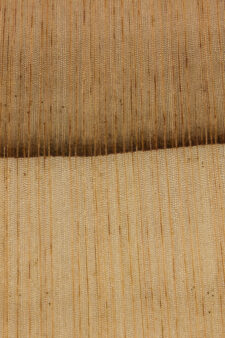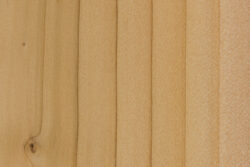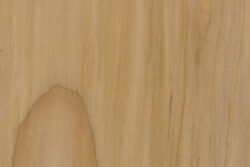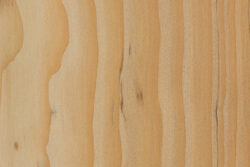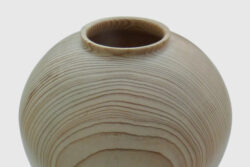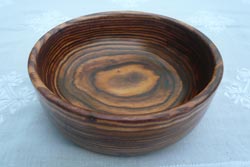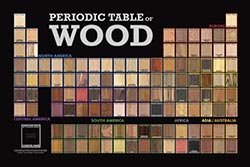Common Name(s): Cedar, Atlas,
Scientific Name: Cedrus atlantica
Distribution: Mountainous areas of Morocco and Algeria (Atlas and Rif mountain ranges)
Tree Size: 65-115 ft (20-35 m) tall,
3-5 ft (1-1.5 m) trunk diameter
Average Dried Weight: 33.0 lbs/ft3 (530 kg/m3)
Specific Gravity (Basic, 12% MC): .44, .53
Janka Hardness: 660 lbf (2,940 N)*
*Estimated hardness based on specific gravity.
Modulus of Rupture: 12,640 lbf/in2 (87.2 MPa)
Elastic Modulus: 1,419,000 lbf/in2 (9.78 GPa)
Crushing Strength: 6,580 lbf/in2 (45.4 MPa)
Shrinkage: Radial: 4.4%, Tangential: 6.2%,
Volumetric: 10.8%, T/R Ratio: 1.4
Color/Appearance: Heartwood is a straw color to light reddish brown. Narrow sapwood is pale yellowish white. Depending on where and how the source tree grew, wood may have large knots.
Grain/Texture: Grain is generally straight, though knots or bark inclusions may cause grain irregularities. Medium to coarse texture with moderate to low natural luster.
Rot Resistance: Rated as very durable, with good overall insect/borer resistance.
Workability: Easy to work with hand and machine tools, though knots and areas with irregular grain can cause difficulties in machining. Turns, glues, and finishes well.
Odor: Has a lingering, sweet scent.
Allergies/Toxicity: Although severe reactions are quite uncommon, cedar of Lebanon has been reported to cause skin and respiratory irritation, as well as runny nose and asthma-like symptoms. See the articles Wood Allergies and Toxicity and Wood Dust Safety for more information.
Pricing/Availability: Not commonly available in North America, storm damaged or ornamental trees are sometimes harvested and sold as smaller craft and turning blanks. There is better availability in Europe, where logs are processed into larger sections of lumber, as well as veneer. Prices are expected to be higher than commercial construction softwood lumber, though still in the low-to-mid range for material meant for decorative or specialty purposes.
Sustainability: This wood species is not listed in the CITES Appendices, but is on the IUCN Red List. It is listed as endangered due to a population reduction of over 50% in the past three generations, caused by a decline in its natural range, and exploitation.
Common Uses: Veneer, cabinetry, building construction, boxes/chests (interior lining), and turned objects.
Comments: In a botanical sense, Cedrus libani could be considered a true cedar in even the strictest sense of the word. The most conservative definition of ‘cedar’ is limited only to trees of the Cedrus genus.
Images: Drag the slider up/down to toggle between raw and finished wood.
Identification: See the article on Softwood Anatomy for definitions of endgrain features.
Resin canals : absent (though sometimes present due to injury)
Tracheid diameter : small
Earlywood to latewood transition : gradual (slower grown wood may have a more abrupt transition)
Grain contrast : high
Parenchyma : none
Lookalikes/Substitutes: Cedar of Lebanon can sometimes be confused with other softwoods, particularly those that have aromatic wood. Mediterranean cypress (Cupressus sempervirens) is a species with similar geographic distribution and aromatic wood. While many Cupressus species can have diffuse parenchyma (which Cedrus lacks), the easiest and most practical way to seperate the two is through scent. Initial reference material may be needed, but the scents of the two genera are generally divergent enough to be readily distinguished.
Notes: Different cedar species within the Cedrus genus can’t be reliably separated on the basis of wood anatomy.
Related Content:

